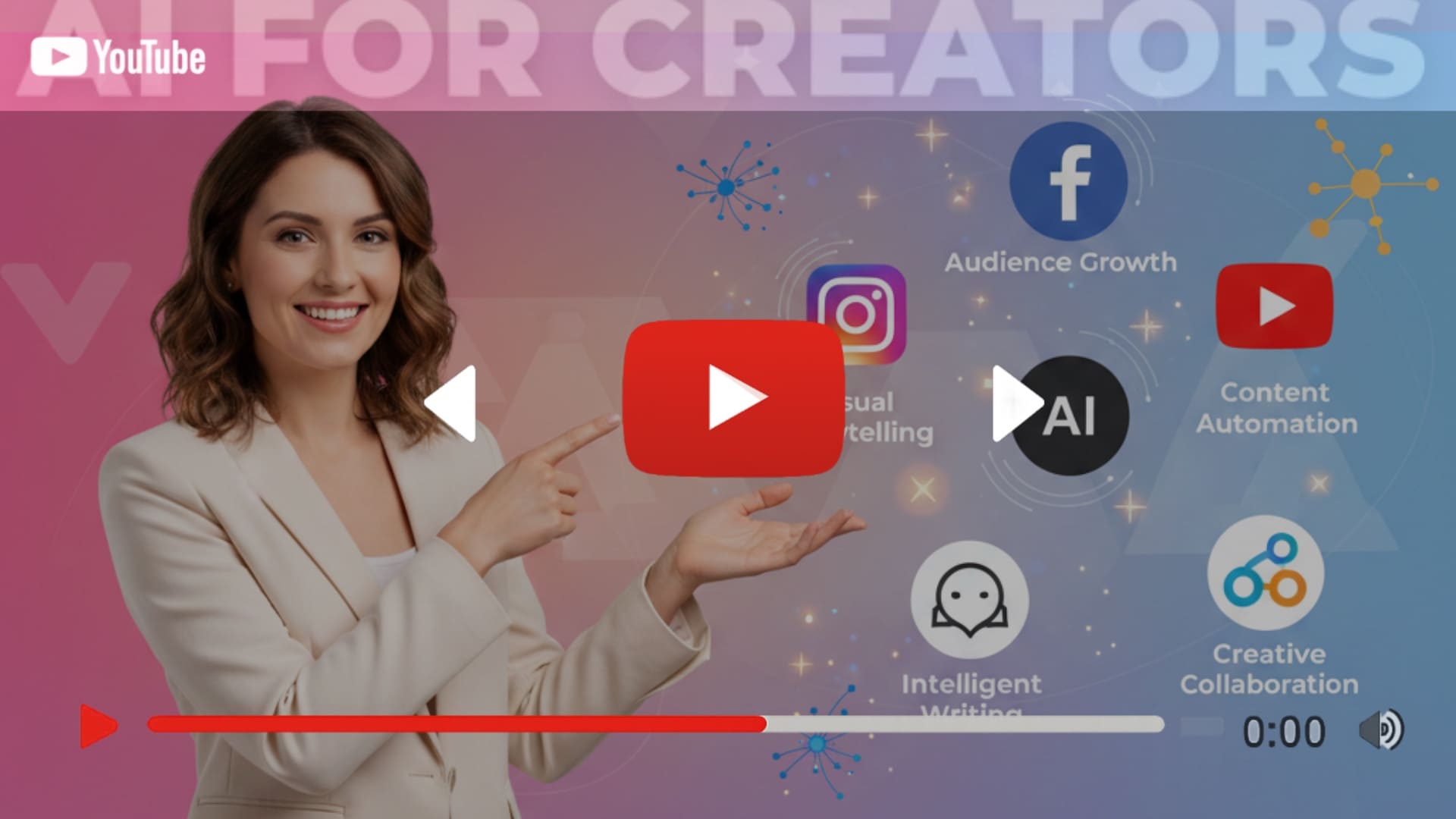The creator economy is undergoing a profound transformation, driven by the rapid advancement of artificial intelligence. What was once a set of manual, time-consuming tasks—from scripting and editing to graphic design and music production—is now being augmented, accelerated, and in some cases, fully automated by AI. For modern creators, AI is no longer a futuristic concept; it is a practical, accessible toolkit for boosting productivity, enhancing creativity, and unlocking new revenue streams. In this guide, we'll explore the six core pillars of AI in the creator ecosystem, from initial generation to strategic monetization.
1. AI Content Creation: The New Digital Factory
At the forefront of this revolution is pure content generation. AI has evolved from a simple assistant to a capable co-creator. This is most evident across several key domains:
- Writing & Copywriting: Tools like ChatGPT, Jasper, and Copy.ai are used to draft blog posts, generate ad copy, script videos, and even assist in long-form storytelling.
- Video Creation: The barrier to video production is dropping. Platforms like Runway ML, Pika, and Synthesia allow creators to generate video from text prompts, create AI avatars, or animate existing images.
- Visual Art & Design: Text-to-image models (Midjourney, DALL·E 3, Leonardo.ai) have democratized visual creation. Creators now generate concept art, social media graphics, NFT collections, and unique brand assets in seconds.
- Music Production: AI composers such as Suno, AIVA, and Mubert can produce royalty-free soundtracks, custom jingles, or new musical ideas, making high-quality audio accessible to all.
This shift from manual creation to AI-driven generation allows creators to produce at a scale and speed previously unimaginable.
Visual Demonstration
Watch: PromptSigma featured Youtube Video
2. AI-Assisted Creativity: The Human-in-the-Loop
Beyond simple generation, AI serves as a powerful creative partner, enhancing and streamlining existing workflows. This "human-in-the-loop" approach amplifies a creator's unique voice rather than replacing it.
- Idea Generation: AI is an invaluable brainstorming partner. It can help outline content topics, draft video storyboards, or generate 100 variations of a marketing hook.
- Editing & Enhancement: AI tools are automating tedious post-production tasks. Descript offers text-based video editing, OpusClip automatically finds viral moments, and AI-powered photo editors enhance image quality instantly.
- Personalization: By analyzing audience data, AI can help creators tailor their content to specific niche segments, increasing engagement and resonance.
3. Monetization Strategies: The New AI Economy
AI doesn't just help create content; it creates new pathways to monetization. The creator economy is expanding with business models built entirely on or around AI.
- Selling Digital Products: Creators are selling AI-generated art as prints, creating and selling high-quality prompt bundles, or offering AI-generated design templates.
- Knowledge & Services: Experts are launching AI-assisted courses, paid newsletters, and consulting services to teach others how to leverage these new tools effectively.
- Automated Businesses: Entrepreneurs are building "faceless" YouTube and TikTok channels, or automated blogging businesses, where AI handles the bulk of the content creation.
- Client Services: Freelancers now offer AI-generated assets, such as voice-overs, custom art, or marketing copy, as a service to clients.
4. The New Creator Tool & Ecosystem
Navigating the AI landscape requires knowing the key players. The ecosystem is vast, but most tools fall into a few key categories that form the modern creator's "stack."
- Text-based (LLMs): ChatGPT, Claude, and Notion AI for writing, brainstorming, and organization.
- Image-based: Midjourney, Adobe Firefly, and Ideogram for high-quality, commercially-safe visual generation.
- Video/Audio-based: Synthesia (avatars), ElevenLabs (voice cloning), Runway, and Pika (video generation).
- Productivity & Integration: Tools like Airtable AI, Notion AI, and Canva's Magic Studio embed AI directly into existing workflows.
5. Ethics & Authenticity: Navigating the New Frontier
With great power comes great responsibility. The use of AI in creative work raises critical questions that creators must navigate to build trust with their audience.
- Copyright & Ownership: The legal landscape for AI-generated work is still evolving. Understanding the terms of service for each tool and the copyright status of your output is crucial.
- Transparency & Disclosure: Audiences value authenticity. Disclosing when and how AI is used (e.g., "This video uses an AI-generated voice") is becoming a best practice.
- Maintaining the Human Touch: The most successful AI-powered creators use AI to enhance their originality, not replace it. The "human touch"—your unique perspective, story, and curation—is now your most valuable asset.
6. Creator Case Studies: Success in Practice
The theory is powerful, but the practice is inspiring. Across the globe, creators are building new empires by integrating AI into their core business.
- YouTubers: Many are using AI avatars or realistic AI-cloned voices (with disclosure) to produce content in multiple languages, dramatically expanding their reach.
- Designers & Artists: Individuals are launching successful e-commerce stores selling AI-generated t-shirt designs, prints, or digital assets.
- Writers & Authors: Self-published authors are using AI to outline, co-write, and illustrate books, while newsletter-writers use it to summarize research and draft content.
Ultimately, AI is a tool. Its power lies in the hands of the creator who wields it with skill, strategy, and a clear, authentic vision.

